#etymonline.com
Note
Heya! Your recent dino etymology was super fun to read (≧▽≦)
I'll be really interested to read more of it :))
Also purely out of curiosity, but is there any story behind your knowledge of dino etymology?
I'm so glad you liked it! x) Here's another one:
So there is currently a dinosaur referred to as the Edmontosaurus, which means the not-so interesting "dinosaur from Edmonton," however, one of its earlier classifications was anatotitan, which much more interestingly means "giant duck." If I am being entirely honest, duck is not the first thing I would have likened to the pictures I've seen, but I guess with a layer of feathers it might make a little more sense.
The word is a compound in two parts, the first being the Latin anas which means "duck," and I've seen it be credited to a few different Indo-European roots, but the clearest connection looks like anat- for "duck" or "water bird." This particular root was what gave rise to the original Old English term for duck, ened, which was eventually replaced by a different Old English term duce, meaning "diver, dipper or ducker."
The second half is actually the same as one of the components of a previous dinosaur post, being titan which means "large, grand" coming from the Ancient Greek Τιτάν titan, which refers to the race of mythical, pre-Olympian giants.
To be honest, I'm not sure how I've learned so many of these. On more than one occasion I've fallen down an internet rabbit-hole finding increasingly bizarre names for sometimes otherwise innocuous or sometimes utterly entirely absurd creatures. Scientists are much more creative people than they get credit for.
#onelook.com#lexilogos.com#wiktionary.org#Charlton T. Lewis#An Elementary Dictionary at perseus.tufts.edu#etymonline.com#https://academiaprisca.org/indoeuropean.html#language#linguistics#etymology#history#dinosaurs#ducks#Old English#Latin#Proto-Indo-European#PIE#historical linguistics#philology#fun facts#words#animals#natural history#science#https://www.old-engli.sh/dictionary.php
7 notes
·
View notes
Text
#you can obviously tell what i use#words#whats the etymology of okay???#hang on im going to etymonline.com#but it does stand for#“oll korrect”#meaning authorization approval or endorsement#also popularized by the political followers of president van buren#standing for his nickname “Old Kinderhook”#they were called the O.K. Club#i have learned new things this day#honelynn rambles
3 notes
·
View notes
Text
Did you know that "gremlins" didn't exist until the early 20th century, when airplanes were used in the world wars? Like a lot of other fantasy creatures that are popular in western media, the British came up with them. They were used to explain confusing, sudden, or difficult airplane problems which seemingly arose without logical cause. Many aviators who fought in the world wars genuinely believed in these creatures. They were an often-used and somewhat important part of the aviation vernacular, and were featured in aviation related posters and propaganda.

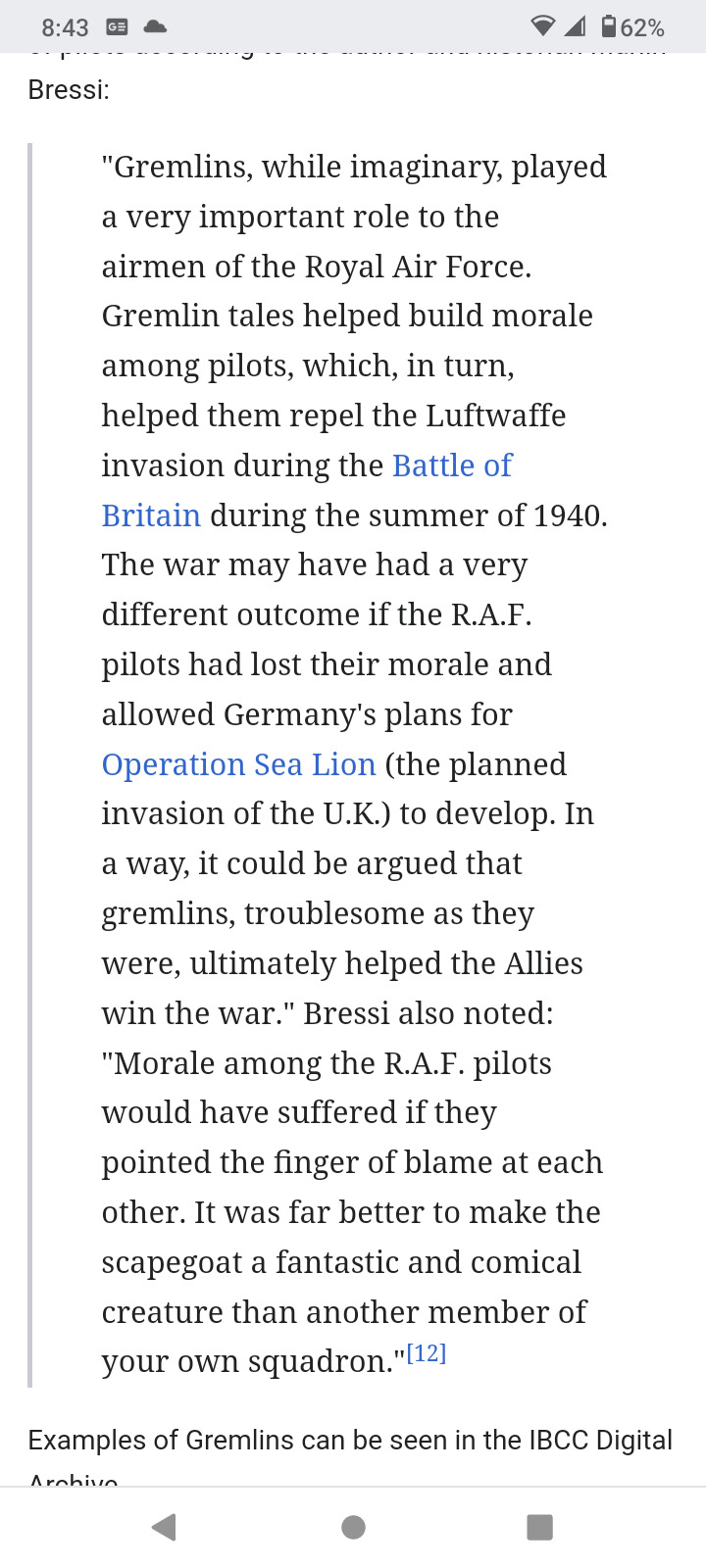
[Screenshots show text taken from Wikipedia. I hadn't taken them for this post, but they're related, so they're here anyway.]
Disappointingly, the propaganda depicts them as small little men (originally, at least), which is not very creature OR gender of them. On the other hand, however, it is said that the word is related to the Irish "gruaimin", meaning 'bad-tempered little fellow'*, and I think that many of us can connect to this on a deep level.
Consider the above when using the word to describe people or aesthetics. Or don't. I don't really care, I just think that this is super interesting.
#I'm not an expert on this so i encourage you to do your own research#or googling#i googled tbh#gremlins#fantasy creature#did you know#airplanes#sorry for infodumping. i learned all of this 15 minutes ago#also i can't recommend etymonline enough#it is an etymology dictionary. meaning that it tells you the history of a word and its relatives#i enjoy it a lot. good resource.#* (taken verbatim from etymonline.com)#like and reblog if you are a bad tempered little fellow#corncob barking
0 notes
Text
Etymology of 'venerate'
620s, back-formation from veneration, or else from Latin veneratus, past participle of venerari "to reverence, worship," from venus (genitive veneris) "beauty, love, desire" (from PIE root *wen- (1) "to desire, strive for"). Related: Venerated; venerating.
Etymonline.com
74 notes
·
View notes
Text
The Gospel Of Elphaba
In May 1900, the George M. Hill Company published The Wonderful Wizard Of Oz, a book written by L. Frank Baum and illustrated by W. W. Denslow. That book captured the imagination of its audience enough to get sequels and one of the most dangerous film adaptations to make of all time.
The book was about good and evil, and featured a stereotypical medicine journey about a child trying to return home. It discussed personal growth and childhood fantasy and is generally a good book, even with the elements that haven't aged as well (again, it was published in 1900).
But then, in 1995, Gregory Maguire wrote Wicked: The Life and Times of the Wicked Witch of the West, a fanfiction that takes a very different approach on the story. This book discusses the same themes, but from a different angle. Now things are complicated.
Enter Wicked, the musical, which dissects the themes even further, and uses its opening song, No One Mourns The Wicked to tear apart the idea of good and evil in the original book.
Let me explain.
SPOILERS AHEAD

I wasn't joking in the title of this post. No One Mourns The Wicked (NOMtW) and the musical as a whole do act as a gospel. Which is fascinating.
Now, I am not Christian, but I do have experience with the faith from a scholarly perspective and from growing up in a heavily Christian culture. As such, while I will treat the faith with the respect befitting any living religion, my perspective on it is that of an outsider looking in, so I cannot be considered a definitive source on Christianity.
The word "Gospel" comes from a few different sources, most notably "godspell" according to etymonline.com, which means "good spell" or "good message" or, if you really stretch the thesaurus, "good news."
The gospel of mark literally opens with "the beginning of the gospel of Jesus..." (English Standard Version) or "the beginning of the good news about Jesus..." (New International Version). So, the word is interchangeable.
And would you look at that, the opening words of NOMtW are:
"Good news, she's dead".
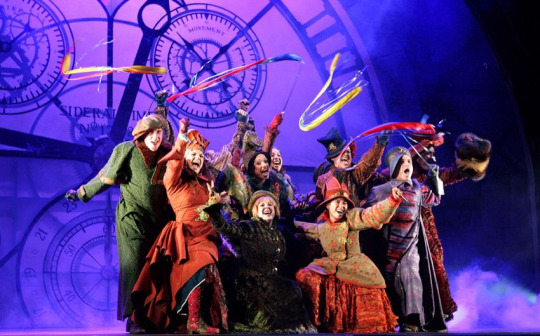
The song is deliberately drawing comparison between Elphaba and the Biblical Messiah, specifically with the defining act. Jesus' most famous act was his death, and the same is true for Elphaba. But both characters have more to their story than the surface level ideal, notably their perspective that people should be kind to each other, and that was why they were "killed". Also, neither of the two stay dead for very long.
But there is more to the similarity than just some neat little references, specifically in how they differ. And that might be contradictory, but it really isn't. Opposites are similar in how they relate specifically to each other. A thing can only be the opposite of something else, it can't be the opposite on its own.
NOMtW actively asks the question: "Was it actually good news?" Specifically in relation to Elphaba. Wicked is told from the perspective of Elphaba, and it frames her death as a tragedy. So NOMtW gives the audience the setup for that story.

"No one mourns the wicked!"
"No one cries they won't return!"
"No one lays a lily on their grave!"
Voiceplay has a phenomenal A cappella Medley for the Wicked musical that I highly recommend you check out.
These lines serve to build into the tragedy itself, they make you feel sad for the deceased person. But the anger with which they are said gives a different vibe. Suddenly, these become warnings, don't be wicked or else.
Fun fact: I was in a high school production of this musical, as a chorus member, and I was given the line about the lily. The director told to deliver the line as a threat to the audience, which reframes the meaning a bit, doesn't it? The chorus is telling you not to empathise with the Wicked Witch of the West.
And interestingly, that's who she is in this song. The name "Elphaba" isn't mentioned once. She is the Wicked Witch. That's who the audience thinks she is, and that's who the chorus thinks she is. The citizens of oz become the audience surrogates.
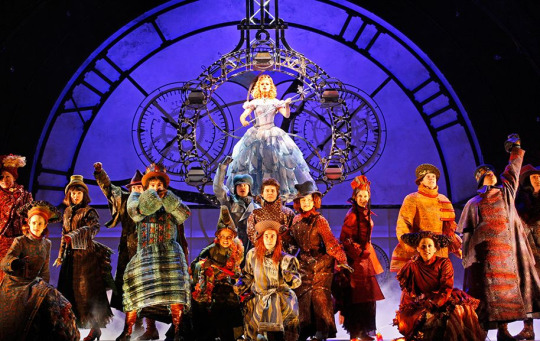
Glinda, the good witch, then begins to argue with the chorus. Her melodic voice contrasts with the spite of the Ozians, and that translates into her lyrics.
The conflict here is to confuse the audience, I think. It is to ask them who they think they should be agreeing with here. And when the chorus echos Glinda's words, they change them. Those last three lines become:
"And goodness knows,
the Wicked's lives are lonely.
Goodness knows,
The Wicked die alone.
It just shows when you're Wicked,
You're left only
On your own."
What is truth in this world? Can even that be trusted? That's what the musical as a whole seeks to answer, as well as what consequences that has on the real world.
"Nothing grows for the Wicked
They reap only
What they've sown"

"Are people born Wicked? Or do they have wickedness thrust upon them? After all, she had a father. She had a mother, as so many do"
I have put some of the above quote in bold, and that is because it is a fantastic question to ask in a story about good and evil. In the original book and subsequent film, the Wicked Witch of the West is evil because she does evil things. She tries to kill Dorothy on multiple occasions, so she is evil, right?
Here, Glinda asks a simple question: "Why did the witch do that?" And this part of the song becomes spoken instead of sung, to really emphasise the point.
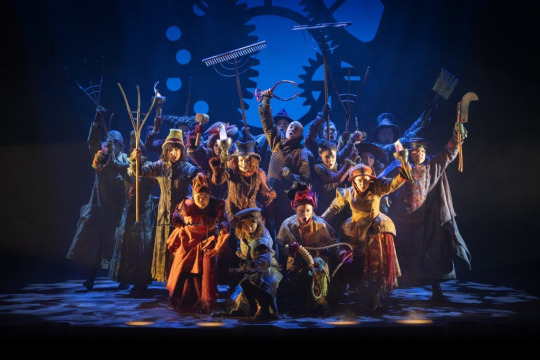
But Glinda also tries to humanise Elphaba here, she had a mother and a father. This reminds me of another humanising moment, but not from the bible this time.
"Hath not a Jew eyes? hath not a Jew hands, organs, dimensions, senses, affections, passions? ... If you prick us, do we not bleed? If you tickle us, do we not laugh? if you poison us, do we not die? And if you wrong us, shall we not revenge?"
This is from Act 3 Scene 1 of William Shakespeare's The Merchant of Venice, written in the 1590s. And it features Shylock, the outcast of the plot, appealing to a collection of people that he is in fact, just as human as them. He tries to convince them that the outsider is worth respect just as much as any other, and that his actions have motivations just as much as any other.
In that story, the appeal has no effect, and in Wicked, written 400 years later, I can't say it is any different.

The moment with the mysterious lover is important because it is yet another specific divergence from the biblical story. It turns out to be the Wizard, a man from another world, who comes to see the mother of the protagonist. But the divinity is removed, and that's a key element here. Elphaba isn't a one-to-one Jesus figure, she's had all of the intrinsic morality taken away and replaced with being green.
Elphaba is othered because of a physical alteration caused by elements she has no control over. She is outcast from even her family because of her appearance. I will talk in another post about what being green means in story, but for now, it is most certainly not heavenly, instead being linked with the garden of Eden with the snake and the apple.
That apple is a neat connection to the vial that the wizard offers Elphaba's mother, once again reframing the story. Now the Wizard gets aligned with the snake, making Elphaba the antichrist? This metaphor goes buck wild if you look too far into it.
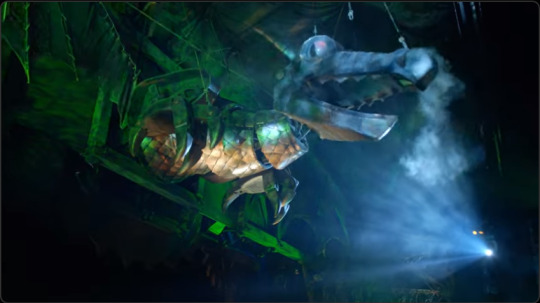
Final Thoughts
I have a love for Wicked, to the point where it is one of those formative stories for me. The music is fun and as I grew up, I realised that I empathised with more characters than I was entirely comfortable with.
If this is the first of my posts you have read, I do analysis of storytelling. This will be a series on Wicked as a whole, specifically delving into the songs and what they say about the musical's themes. Next week, I will take a look at The Wizard And I, so stick around if that interests you.
Next
#wicked#rants#literary analysis#literature analysis#character analysis#what's so special about...?#wicked the musical#wicked musical#elphaba#the gospel of elphaba#glinda upland#elphaba thropp#wizard of oz#no one mourns the wicked
51 notes
·
View notes
Text
Samhain
Crisp air like a freshly picked apple and leaves the colors of sunset indicating the ending of a season; here comes Autumn and with it a very popular pagan holiday: Samhain!
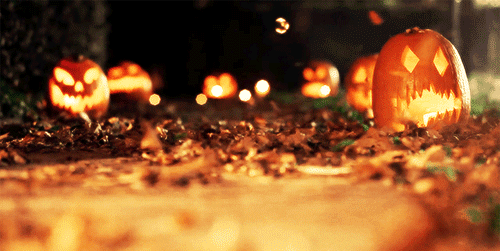
This is a remake of my original Samhain post. This one is going to be a long one so buckle up!~
While us those in the northern hemisphere are celebrating Samhain, our friends in the southern hemisphere will be celebrating Beltane!
Historical Samhain
The name “Samhain” (pronounced Sah-when) comes from the Old Irish samain which literally means “Summer’s end” as it was created using Old Irish sam ”Summer” and fuin ”end” (etymonline.com).
By now I’m sure you’ve guessed Samhain’s origin, it’s a Celtic* festival, one of four major holidays.
**In this post when I refer to “Celts” or “Celtic people” I am referring only to the Insular Celts, more specifically the Gaelic-speaking Celts. To learn the difference between Celtic and Gaelic please read this article
For these Celts, Samhain was the beginning of the new year. Due to the oral nature of the culture, not much is known about the traditions of Samhain, though we have some documentation from other cultures as well as some ideas from historians as to what they may have done.
Traditions
The traditions of Samhain may vary by group or even by family, but one common tradition was to have a large, public sacred bonfire. (Fun fact, the term “Bonfire” comes from the English “bonefire” meaning literally “a fire of bones”). During these bonfires, the Celts would sacrifice livestock and crops as offerings to their deities.
Households would extinguish their hearth fires earlier that day and would take the flame from the public bonfire to reignite their hearths. This was likely to represent renewal or new beginnings as they transitioned to the new year as well as a representation of community.
The veil between this world and other worlds is thought to be very thin on Samhain, making it easier not only for us to reach out to spirits, deities, and the like, but for them to reach out to us. These otherworldly beings are thought to be able to influence our world more powerfully during Samhain.
In some places, like Britanny, they believed that the dead would visit their living friends and relatives during this time.
In Welsh tradition, people would leave out food, leave doors unlocked, and prepare the house for the spirits of relatives that may come to visit.
Large turnips were hollowed out and would have faces carved into them and then place on window sills to ward off evil spirits.
In other places, like Scotland, Samhain was a time for mischief. Young men would dress up as spirits, donning masks, painting their faces, or wearing costumes.
Divination was very popular during this time, especially marriage divination. This wasn’t just done by druids but by the common folk as well.
In some places, it was considered taboo to forage for fruit or grain during and after Samhain, it was thought that the fae or spirits would have passed over and tainted them. There were even laws against doing so.
Notes
Samhain is the Irish name for the month of November.
Samhain is one of the four main holidays of the ancient Celts, the other three are Beltane, Lughnasadh, and Imbolc.
Pigs were the choice of sacrificial animal for Samhain.
Samhain was a sacred time that often welcomed assemblies and would be used to settle important business matters like the inauguration of new kings, debts being paid, and trials.
In Celtic mythology, the Second Battle of Mag Tuired begins on Samhain.
Trick-or-treating is a modern-day tradition but could have derived from the many different traditions of old.
The Cailleach is a seasonal goddess said to rule the “dark” side of the year (fall and winter) and would rule between Samhain and Beltane. Likewise, the goddess Brigid would rule the “light” side of the year between Beltane and Samhain.
While Wiccans may celebrate Samhain as part of their Wheel of the Year, it is not a Wiccan-specific holiday and has ties to much older traditions.
Modern Halloween is an amalgamation of Samhain and the Christian All Hallows’ Eve or All Saints’ Day and All Souls’ day. Halloween found its popularity after many Celts immigrated to North America.
Similar to these holidays is Día de los Muertos (Day of the Dead) which originated in Mexico. This holiday reunites the living and the dead, allowing the spirits of loved ones to cross back over to our world for a short period of time. Families will make altars and give offerings to those who have passed. Festivities and celebrations are held during this time. It is traditionally held on November 1st or 2nd but is celebrated on October 31st or November 6th depending on the location.
Modern Samhain
As long as you’re aware of and honor the history of Samhain and are being respectful you can celebrate this holiday however you choose!
Here is a list of correspondences and the like that I found throughout my research for Samhain, some have historical backing and others don’t. Take what speaks to you and leave what doesn’t.
Food
Mead, beer, and mulled wine
Meat
Bread, soul cakes, pies, and other such pastries.
Apples, squash, and potatoes.
Colcannon
Soul cakes
Barmbrack
Colors
Warm colors such as red, orange, brown, and yellow.
Black
Dark green
Rocks & Metals
Onyx
Obsidian
Citrine
Hematite
Carnelian
Smoky quartz
Tiger’s eye
Ruby
Copper
Jet
Plants
Rosemary
Thyme
Vervain
St. John’s Wort
Mugwort
Dragon’s blood
Saffron
Deities
The Morrigan
The Dagda
The Morrigan and The Dagda seem to be the main deities for Samhain as per Celtic mythology but you could also choose to honor any Celtic deity or even other deities on this day, especially those involving liminality and death such as:
Cerunnos
Diana
Anubis
Hecate
Heimdall
Here are more liminal deities and here are more death deities.
Magic & Spellwork
Spirit work: honoring or communicating with spirits
Banishing and cleansing (out with the old and in with the new!)
Honoring ancestors
Activities
Bonfire
Fest
Baking
Decorating or creating an altar for Samhain
Other Correspondences
Tarot: Death, The World
Death in the Tarot often means “the end of something with the promise of something new on the horizon”, and represents transition the perfect card for a holiday of similar sentiment.
The World tarot card indicates cycles, closure, and completion.
Zodiac: Scorpio
It’s Scorpio season!
Runes: Fehu, Eihwaz
Fehu can represent new beginnings.
Eihwaz represents transformation, out with the old and in with the new, which pairs well with the ancient Celtic new year.
Androgyny
In Samhain's past, it wasn’t uncommon for men to dress in traditionally women’s clothes and women to dress in traditionally men’s clothes. While the social idea of gender is shifting and we don’t gender clothes as often in some modern societies, we can still use this as a way of celebration. Androgyny is like the liminal version of gender, neither male nor female. So trans witches or gender non-conforming witches of all flavors: show yourself some extra love this coming Samhain holiday!
References and Further Reading
The Ancient Origins of Halloween - History.com
Samhain - Worldhistory.com
Halloween Customs in the Celtic World - by Bettina Arnold
Samhain - Wikipedia
Samhain - Flying the hedge
Secular Celebrations - Samhain - @breelandwalker
#samhain#witchcraft#witchy holidays#pagan holidays#halloween#spooky season#pagan#grimoire#witchblr#celtic paganism#celtic#celtic witchcraft
374 notes
·
View notes
Text





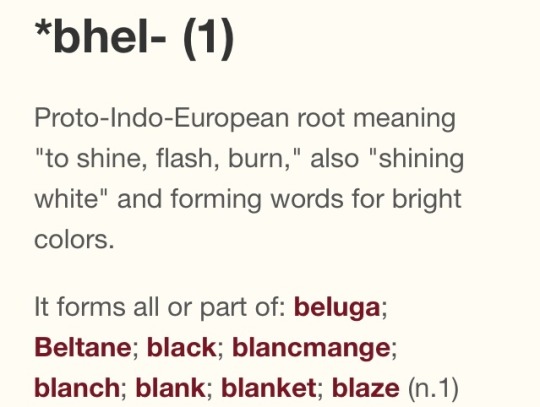

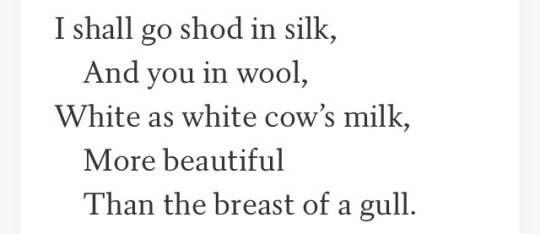
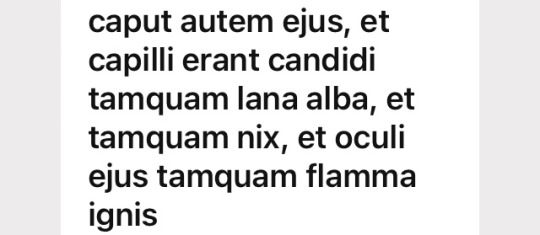

Charles Dickens, A Christmas Carol | me and bleoberys in the snow last winter | etymonline.com | collinsdictionary.com | Shakespeare, Romeo and Juliet | etymonline.com | Gawain and the Green Knight | Elinor Wylie, Velvet Shoes | Apocalypsis 1:14 | Dylan Thomas, A Child's Christmas In Wales
#web weaving#etymology#middle english#latin#proto indo european#poetry#Shakespeare#dylan thomas#elinor wylie#gawain and the green knight#charles dickens#scripture
12 notes
·
View notes
Text
I went on quite an etymology adventure today.
So as you can see, my blog name is delphinidin, which is the chemical that makes flowers and fruits blue or blue-ish. I figured the word was from “delphinium,” the blue flower, and I wanted to know if the word delphinium came from Delphi, as in Greece, as in, The Oracle Of.
So I looked up delphinium. Etymonline.com, my usual port of call, was no help in this case, so I used wikipedia:
“The genus name Delphinium derives from the Ancient Greek word δελφίνιον (delphínion) which means "dolphin", a name used in De Materia Medica for some kind of larkspur. Pedanius Dioscorides said the plant got its name because of its dolphin-shaped flowers.”
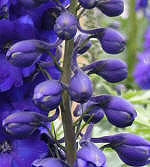
Okay, I can see it.
So then I looked up the etymology of Delphi:
“Delphi shares the same root with the Greek word for womb, δελφύς delphys.“
Oookay. I mean, that makes sense, as far as it goes: Delphi is the site of the omphalos, the navel of the earth. But now I had another question: are the words “dolphin” and “womb” connected in Greek??
Aaaaaand.... Yes. Yes, they are:
“Etymologically speaking, the word ‘dolphin’ comes from the ancient Greek delphis, itself related to the Greek delphus, or womb, so the animal’s name more or less means ‘a ‘fish’ with a womb.’ “
So that was a real ride.
72 notes
·
View notes
Text
I was checking etymonline.com for the word “hover” and

Behold the windfucker.

227 notes
·
View notes
Note
So. This has been bugging me, and I finally looked it up at etymonline.com for a more exact date:
"round object, compact spherical body," also "a ball used in a game," c. 1200, probably from an unrecorded Old English *beal, *beall (evidenced by the diminutive bealluc "testicle"), or from cognate Old Norse bollr "ball," from Proto-Germanic *balluz (source also of Dutch bal, Flemish bal, Old High German ballo, German Ball), from PIE root *bhel- (2) "to blow, swell."
The meaning "testicle" is from early 14c. (compare ballocks)."
--
18 notes
·
View notes
Note
Hey, do you know what's the etymology of the termination "scape"? As in landscape and hellscape, I've tried googling it but I'm not finding anything :(
Hi, thank you for asking!
I had a look on Wiktionary and checked a couple other sources like etymonline.com and here's what I found:
The suffix -scape is abstracted from landscape, which came into English through the Dutch landschap. Landschap, originally meaning region or district, was equivalent to land and -ship (meaning the suffix, like friendship or ownership). The English suffix -ship came from the same Germanic roots as the Dutch -schap.
Hope this answers your question!
48 notes
·
View notes
Text
banshee
The current Britannica article describes them as a “supernatural being in Irish and other Celtic folklore whose mournful “keening,” or wailing screaming or lamentation, at night was believed to foretell the death of a member of the family of the person who heard the spirit.” Although modern stories make them out to be twisted spirits or demons, the original Irish folklore painted them more as heralds of death, allowing the family to prepare.
They are described in all different manners of apparition, from beautiful young women to old, ragged crones, but one of the most consistent features is painful eyes red from crying.
The word is actually made up of two from Irish, which are ben, or “woman” and sid, or “fairy hill.” The Old Irish was bean sidhe, with the same breakdown, meaning more precisely, “woman of the fairy mounds.” The sidhe were the hills in Irish and other Scots folklore where fairies and other mythological creatures dwelt. That particular morpheme can be interestingly tied to the Proto-Indo-European root sed-, meaning “to sit.”
#https://www.irishtimes.com/culture/heritage/fairy-forts-why-these-sacred-places-deserve-our-respect-1.3181259#https://www.yourirish.com/folklore/sidhe-in-ireland#https://www.yourirish.com/folklore/banshees-in-ireland#https://www.britannica.com/science/sidh#etymonline.com#wiktionary.org#https://academiaprisca.org/indoeuropean.html#eDIL - Irish Language Dictionary#https://www.britannica.com/topic/banshee#mythology#folklore#folktales#stories#myths#legends#spirits#ghosts#death#etymology#history#irish#language#linguistics#historical linguistics#teanglann.ie
5 notes
·
View notes
Text
Ineffable Etymology
There's an etymological link between 'ineffable' and 'unmentionables' as in underwear, and I'm CACKLING.
From etymonline.com:
I have retain'd the word BREECHES, as they are known by no other name amongst country folk.--The change from vulgarity to refinement, in cities and towns, has introduced other appellations; there they are generally called SMALL CLOTHES, but some ladies of high rank and extreme delicacy call them INEXPRESSIBLES.
--footnote in "Poems Miscellaneous and Humorous," by Edward Nairne, Canterbury, 1791]
Inexpressibles is the earliest recorded and thus seems to have begotten the trend: Unmentionables (1806); indispensibles (1820); ineffables (1823); unutterables (1826); innominables (1827); and inexplicables (1829) followed.
Don't mind me, I'm just imagining Crowley as a Regency lady "of high rank and extreme delicacy" going around in 1823 encouraging the usage of 'ineffables' to mean underthings, just to fluster Aziraphale.
4 notes
·
View notes
Text
Etymology of 'universe'
1580s, "the whole world, cosmos, the totality of existing things," from Old French univers (12c.), from Latin universum "all things, everybody, all people, the whole world," noun use of neuter of adjective universus "all together, all in one, whole, entire, relating to all," literally "turned into one," from unus "one" (from PIE root *oi-no- "one, unique") + versus, past participle of vertere "to turn, turn back, be turned; convert, transform, translate; be changed" (from PIE root *wer- (2) "to turn, bend").
also from 1580s
*oi-no-
Proto-Indo-European root meaning "one, unique."
It forms all or part of: a (1) indefinite article; alone; an; Angus; anon; atone; any; eleven; inch (n.1) "linear measure, one-twelfth of a foot;" lone; lonely; non-; none; null; once; one; ounce (n.1) unit of weight; quincunx; triune; unanimous; unary; une; uni-; Uniate; unilateral; uncial; unicorn; union; unique; unison; unite; unity; universal; universe; university; zollverein.
It is the hypothetical source of/evidence for its existence is provided by: Greek oinos "ace (on dice);" Latin unus "one;" Old Persian aivam; Old Church Slavonic -inu, ino-; Lithuanian vienas; Old Irish oin; Breton un "one;" Old English an, German ein, Gothic ains "one."
*wer- (2)
Proto-Indo-European root forming words meaning "to turn, bend."
It forms all or part of: adverse; anniversary; avert; awry; controversy; converge; converse (adj.) "exact opposite;" convert; diverge; divert; evert; extroversion; extrovert; gaiter; introrse; introvert; invert; inward; malversation; obverse; peevish; pervert; prose; raphe; reverberate; revert; rhabdomancy; rhapsody; rhombus; ribald; sinistrorse; stalwart; subvert; tergiversate; transverse; universe; verbena; verge (v.1) "tend, incline;" vermeil; vermicelli; vermicular; vermiform; vermin; versatile; verse (n.) "poetry;" version; verst; versus; vertebra; vertex; vertigo; vervain; vortex; -ward; warp; weird; worm; worry; worth (adj.) "significant, valuable, of value;" worth (v.) "to come to be;" wrangle; wrap; wrath; wreath; wrench; wrest; wrestle; wriggle; wring; wrinkle; wrist; writhe; wrong; wroth; wry.
It is the hypothetical source of/evidence for its existence is provided by: Sanskrit vartate "turns round, rolls;" Avestan varet- "to turn;" Hittite hurki- "wheel;" Greek rhatane "stirrer, ladle;" Latin vertere (frequentative versare) "to turn, turn back, be turned; convert, transform, translate; be changed," versus "turned toward or against;" Old Church Slavonic vrŭteti "to turn, roll," Russian vreteno "spindle, distaff;" Lithuanian verčiu, versti "to turn;" German werden, Old English weorðan "to become;" Old English -weard "toward," originally "turned toward," weorthan "to befall," wyrd "fate, destiny," literally "what befalls one;" Welsh gwerthyd "spindle, distaff;" Old Irish frith "against."
—Etymonline.com
54 notes
·
View notes
Text
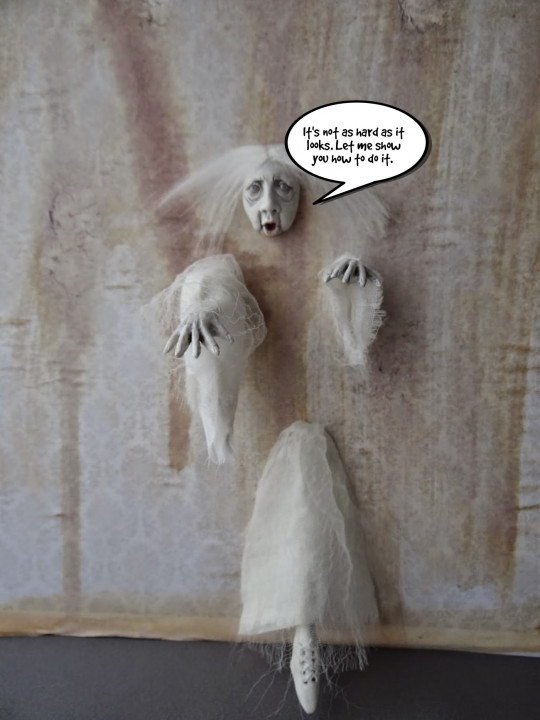
WALK SOMEONE THROUGH SOMETHING
Idiomatic Meaning: To explain step-by-step or in detail how to do something; to help somebody learn or become familiar with something, by showing them each stage of the process in turn.
Literal Meaning: Helping someone move into one side and out of the other side of (an opening, channel, or location).
Usage: Formal and informal spoken and written general American and British English.
Origin: Mid-20th Century - American English – This expression dates back only to 1944, despite its component words, “walk” and “through” going back to 1200 and 1400 A.D. Two similar spellings have slightly different meanings. When separated by a hyphen, a “walk-through” is a theatrical rehearsal. Less common is the one word, “walkthrough”, meaning “an easy part” in a theatrical production. (thanks to etymonline.com)
Why is this funny? In the photo, we see some sort of ghost or spirit walking through a wall towards us. Despite looking like she intends to attack us, she sounds more like she is a beneficial spirit. She tells us that walking through a wall is easier than it looks and she offers to teach us how it’s done, i.e. she offers to “walk us through it (the wall)!
Sample Sentence: Since you’ll be taking care of our dog, I want to “walk you through” her feeding routine.
6 notes
·
View notes
Note
hi hi, scrawling 16, 27, and 76 (for waterfall inquiry) on the back of a cheesy valentine with a heart-shaped lolly taped on top
omg hiiiiii!! sending u some candy hearts (gn) (platonic)
thank u so so much for asking these! it’s been so long since i have chatted about fic.
ask list | read waterfall inquiry here
16. How many fic ideas are you nurturing right now? Share one of them?
oooh, this is an exciting question! I’ve been imagining a sweet valentine’s drabble for waterfall - something short and sweet and tender, as well as thinking a lot about ways to move the story forward - what’s unanswered and unexplored? (Taking input on that btw!)
I’m also sketching outlines for a novel! something something girl-meets-boy-at-group-therapy but not the way you think.
27. What is your most and least favorite part of writing?
I love writing as an exercise in qualifying the “unknowable” or “unspeakable;” really getting to the details of why and how people think and feel and act the way they do. I love using etymonline.com to help me identify the most appropriate word. And I hate sitting down to write again after I’ve been away….and the fact that I am serial “edit while you write” person.
72. Did you have any ideas that didn’t make the final cut of Waterfall inquiry?
YES. Lmao. @frannyzooey knows. I have dozens of screenshots - and I mean dozens. There’s also a rather sweet first “I love you” scene from the virtues uncounted ‘verse that makes me so 🥺🥺🥺
3 notes
·
View notes